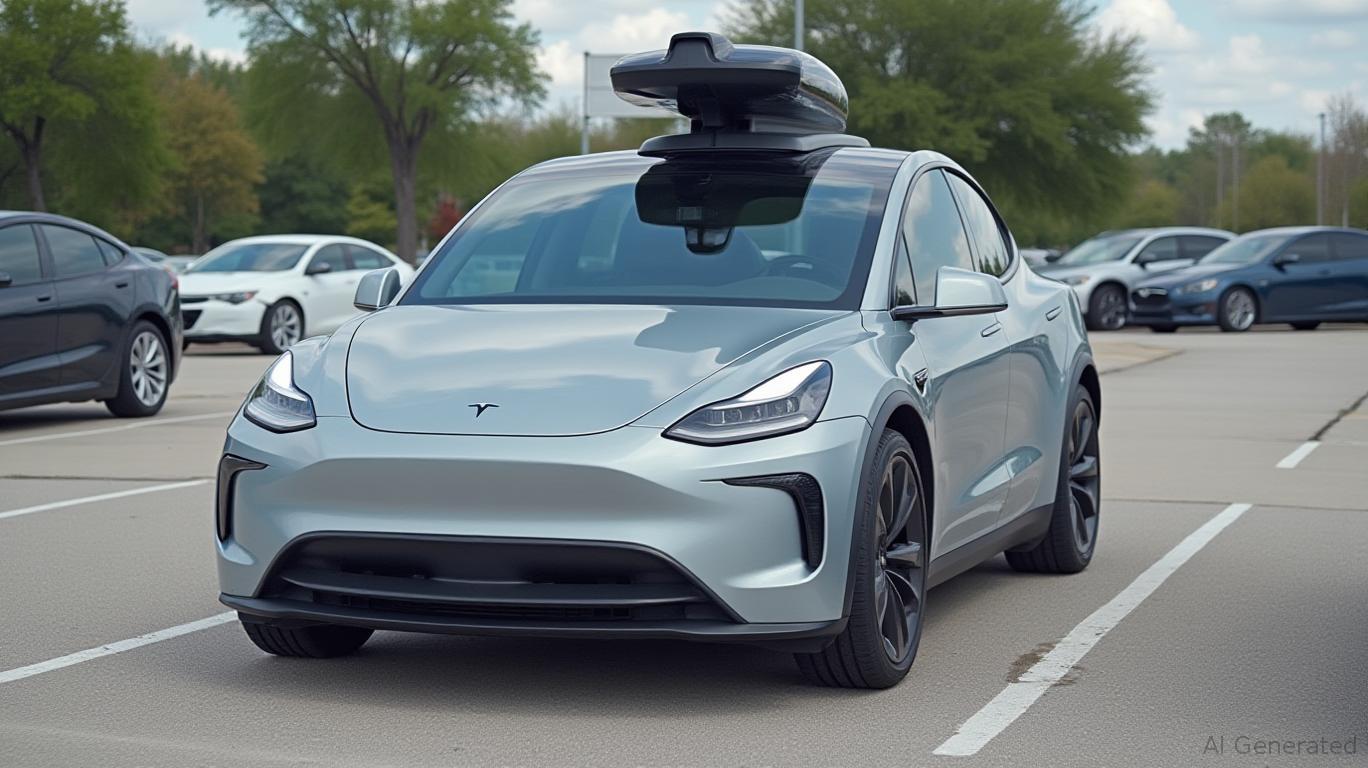Tesla's Robotaxi Rollout: Navigating Near-Term Risks to Unlock AI Mobility Dominance
Tesla's June 12, 2025, launch of its autonomous Robotaxi service in Austin, Texas, marks a pivotal moment for the company's vision of reshaping urban transportation. While this milestone underscores Tesla's ambition to lead the AI-driven mobility revolution, investors must weigh near-term execution risks—such as regulatory hurdles, software reliability, and operational scalability—against the long-term potential of its fully autonomous ecosystem. Here's how to assess the balance between Tesla's bold plans and the challenges ahead.
Near-Term Execution Risks: A Rocky Road to Autonomy
Tesla's Robotaxi rollout faces immediate challenges that could test its ability to deliver on Elon Musk's aggressive timelines.
1. Regulatory Uncertainty
Tesla's push to deploy driverless Model Y vehicles in Texas—a state with lax autonomous vehicle regulations—contrasts sharply with stricter environments like California. While Texas's permissive stance allows rapid testing, broader adoption hinges on navigating varying state requirements. For instance,
Tesla's stock has fluctuated with every regulatory update, reflecting investor sensitivity to execution risks. A misstep here—such as delayed approvals or safety incidents—could amplify skepticism, given the company's history of missing self-imposed deadlines.
2. Technical Reliability of FSD v13
The Robotaxi service relies on FSD v13, a camera-only system that eliminates lidar and radar in favor of neural network-driven decision-making. While this simplifies hardware costs, users in the Early Access Program report inconsistencies, such as erratic lane changes and delayed traffic light recognition. The shift from C++ to Python for software development, while enabling faster iteration, raises questions about real-time processing reliability.

Critics argue that Tesla's “beta-as-you-go” approach prioritizes speed over thorough validation. Musk's confidence in the system's 10,000-mile intervention interval is laudable, but public perception will hinge on incidents like the May 2025 near-collision in Austin, where a Robotaxi nearly struck a parked vehicle.
Long-Term Potential: The AI Mobility Play
Despite near-term risks, Tesla's vision for autonomous mobility is transformative.
1. Scalability Through Software
Tesla's ability to convert its existing fleet into Robotaxis via over-the-air updates gives it a decisive edge over competitors like Waymo, which require purpose-built vehicles. By 2026, Musk envisions “millions” of autonomous Teslas on roads—a claim that, if realized, could dominate ride-hailing and delivery markets.
2. The Cybercab Advantage
Tesla's purpose-built Cybercab—debuting in 2026 without a steering wheel—represents a leap forward. With an estimated operating cost of $0.20 per mile, it could undercut competitors like Cruise's Origin (targeting $0.35/mile). The camera-only design, while controversial, aligns with Tesla's “pure vision” approach, which could prove cost-effective at scale.
Investors must assess whether Tesla's software-centric strategy justifies its premium valuation. If successful, the Robotaxi network could generate recurring revenue streams, transforming Tesla from a carmaker into a mobility-as-a-service giant.
Investment Implications: Patience vs. Potential
Tesla's Robotaxi rollout is a high-risk, high-reward proposition. Near-term risks—regulatory pushback, software bugs, and investor fatigue over delayed milestones—could pressure the stock. However, the long-term prize—a $trillion market in autonomous mobility—justifies a strategic position for patient investors.
Key Watchpoints for 2025:
- Safety Metrics: Monitor incident rates and NHTSA responses to FSD-related collisions.
- Regulatory Milestones: Track approvals in key markets like California and New York.
- Operating Costs: Verify Tesla's $0.20/mile claim for the Cybercab versus competitors.
Recommendation:
Tesla's stock is a bet on Musk's ability to execute on his boldest vision yet. While near-term volatility is inevitable, the company's software leadership and first-mover advantage in autonomous driving make it a critical player in the AI mobility era. For investors willing to overlook short-term hiccups, Tesla remains a buy with a multi-year horizon.
In conclusion, Tesla's Robotaxi rollout is a defining moment for its future. Success here could cement its leadership in AI-driven transportation, while missteps may cede ground to rivals. The next 12 months will reveal whether this gamble pays off—or becomes another cautionary tale of overpromising in tech.

Comments
No comments yet